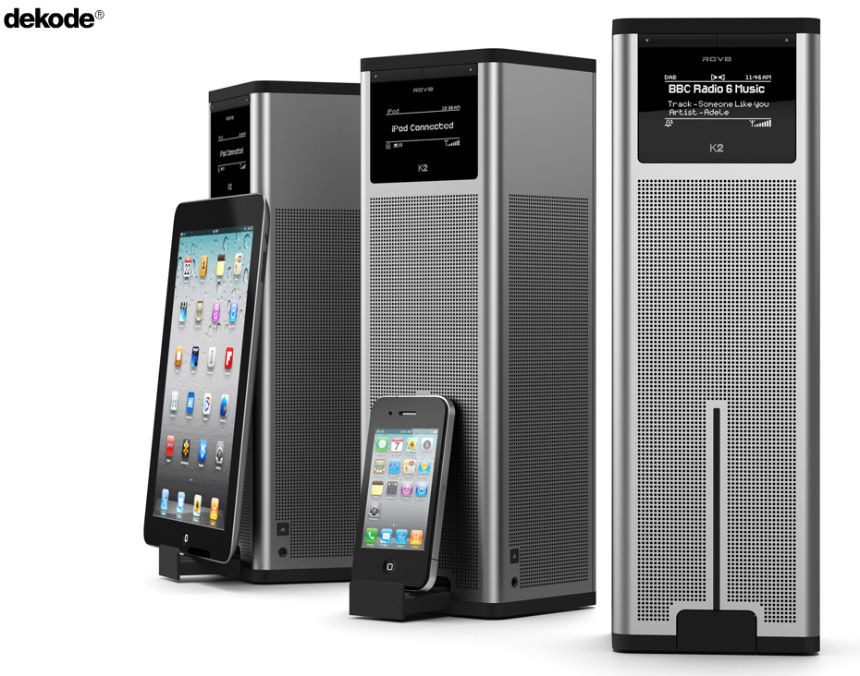Revo K2
Our clients over recent years have ranged from small entrepreneurial startups, such as Revo, to some of the world’s largest companies. We have recently completed a study into the future of mobile internet for Google in California. Other clients include Siemens, Mission Audio, Microsoft, Sky and the BBC.
What’s your basic visualization workflow – where the data coming from?
As we are a design consultancy who design for manufacture not just visualization, our data is NURBs based from a variety of CAD systems. We will then create STEP files from that data that is then read into MoI’s software for meshing. The mesh is then exported out to Maxwell for final render.
As a Maxwell Render user with many years of experience in product visualization, you were sceptical of using HDR Light Studio because you had already developed tried and tested lighting techniques in Maxwell studio. Now you have taken the plunge and become a user, how has it changed things for you?
It’s fitted into the workflow very well. It works particularly effectively with Maxwell’s Fire preview and the combination has really speeded up the preview stage, almost eliminating the need for time consuming test renders.
In terms of the time taken to set up lighting and produce your final renders – what kind of time saving have you been experiencing? And where are you saving the most time, in setup or rendering?
Time saving is mainly in the setup I would say about a 1/3 of the time from geometry based emitters.
Some people say it’s a weird way to lighting an object dragging around lights on a 2D image, you can’t know where to put the light – you need to work in 3D. What do you say to that?
After an hour of playing with the interface this isn’t really an issue. As most of us using this software can (or should be able to!) visualize very well in 3D, the mindset needed to project the 2D world into 3D comes pretty easily.
How long did it take to learn and start getting results of equal quality to what you were doing with emitters and moving geometry in 3D?
About an hour, the first project using the software was the one featured here (Revo’s K2). I needed really good, realistic highlights and shadows to describe the metallic surfaces. HDR Light Studio and Maxwell enabled me to tweak this in real time.
Many of our users are photographers and understand a lot about lighting – do you think this understanding helps users get more out of HDR Light Studio?
Absolutely, having an understanding of the principles of manipulating light and how it reacts when it hits a surface is key to the understanding of all rendering software. Learning these principles is the quickest route to creating life-like images.
Would you recommend HDR Light Studio for Maxwell Studio users?
Yes, without hesitation. It really has speeded up our workflow and as I have stated already when combined with Fire preview, it is awesome. Prior to HDR Light Studio, lighting was the only real sticking point when using the preview feature as it required a refresh to change the position and size of conventional geometry based emitters. This plugin eliminates this and allows for on the fly changes to all the lighting variables.
Can you tell me a little about these K2 renderings?
All the images we create for any product we design for Revo have to be of the highest quality as they are used in packaging and marketing collateral as well as client sign-off. They have to be good enough so that the question “is it real or a rendering” becomes a moot point. People have to assume that they are looking at a good studio photograph. This is particularly true of images that are used in magazine tests and reviews (such as T3 and What Hi-Fi). Most of the time the images are up against product photos of competitor products so they have to look as good or better. With this as our base-line, the results from any software that we use as part of the rendering workflow have to be able to withstand the most critical eye.
The images for K2 were created to really tight deadlines and had to be available at very high resolutions (one of the images was used as the exhibition backdrop for Revo’s stand at IFA). The setup and rendering time savings afforded by HDR Light Studio helped us realize our objectives for this project much more effectively than before.



